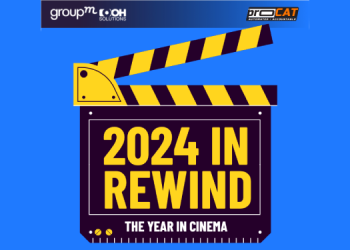Mumbai: Second screens and connected devices have driven all-around engagement with various forms of content and interactive features says a Federation Of Indian Fantasy Sports (FIFS) -Deloitte Report. The rise of short-form content, the need for an active rather than passive watching experience and the desire to get the latest information make the second screen experience indispensable for Gen Z and Millennial sports fans
Over 80 percent of sports fans are estimated to use second screens while watching a live sports TV broadcast.
Most users rely on a second screen to use social media, chat/message friends to make the experience more social and read news updates or search related information while watching a match. This shift provides vast opportunities to connect with fans and forge deeper connections. The large pool of Indian start-ups and tech companies have understood this shift and cater to the fans’ increasing demand for sports content.
Platforms offer various types of content, including match scores, highlights, polls and quizzes, increasing fan engagement. Sports teams, brands and OTTs use SaaS platforms that offer AI-generated short-form content and match highlights using deep learning technologies to meta-tag video content and generate bite-sized clips based on pre-identified key parameters (e.g., in Football: goal, save and yellow card).
The clips are then auto-resized and time-optimised to suit different social platforms and can be auto-shared with relevant graphics and ads added per the client’s requirements. It also helps generate AI-led highlights of a live match.
Platforms that offer sports stats, news and live scores are prime examples of second screens that keep sports fans engaged with instant updates. For instance, a leading cricket data platform is a database of historical matches and players from the beginning to the present. It is considered by many to be the authoritative source for historical cricket data. The platform uses advanced record-keeping and data analytics technologies to present data meaningfully for fans. Similarly, fans highly engage with the FS platforms to create fantasy teams and track the performance of their teams and players during matches.
Engagement on these platforms peaks on match days, indicating that the fans consider them valuable complements to the main sporting event. This is further evidenced by its engagement directly correlating to the leading cricket premier league, which peaks during the league season in April and May.
Traffic on a leading sports information platform grew by approximately 14 per cent during the league season in 2024 and will continue to grow following the Cricket World Cup. Second screens also present revenue generation opportunities for teams, brands and advertisers by reaching the right audience innovatively during live events. A leading media company’s linear vertical launched an innovative patented technology-based solution that allows brands to engage with their audience during a popular cricket league broadcasting.
The solution uses QR codes and allows fans to interact with brands and gain access to special offers by brands on their second screen without disrupting the sports viewing experience.
Picking up on this trend, sports teams have launched mobile apps to keep fans engaged during sporting events and off-season. Leading cricket league teams have dedicated mobile apps that offer live match scores, behind-the-scenes content, contests and other interactive features. One of the leading team’s mobile apps has a fan rewards programme where fans can earn some exceptional experiences and has recently launched a new mobile app that offers a plethora of exclusive features and content, including behind-the scenes interviews to short clips, highlights and a deep dive into stats and player profiles. Interactive games add an extra layer of excitement for the fans.
Globally, companies have been using technology to offer interesting content to keep fans engaged. Platforms use cloud and AI/ML to offer best-in-class streaming, personalisation and a second screen experience to sports-viewing fans globally. They provide live scores, highlights, sports news, videos, stats, standings and schedules, exclusive content and FS for fans.
Localisation and personalisation have enhanced the sports viewing experience for fans: With fans preferring to watch content in their native language, particularly in tier-II and tier-III cities, digital platforms have employed technology to meet their viewers’ demands cost-effectively. Today, various platforms offer content in many local languages using auto-translation tools, GenAI and other technologies.
Beyond serving content in vernacular languages, some popular initiatives help major streaming platforms cater to diverse audiences by providing local-level sports feeds highlighting grassroots competitions across various sports. A leading player in enabling streaming for grassroots-level tournaments provides functionalities such as live telecasts across multiple sports, automated player highlights and player profiling, resulting in enhanced fan engagement in niche areas.
Personalisation on digital platforms is another key aspect for providing a better user experience and keeping the fans engaged with the platform. A leading sports streaming platform offers personalisation by providing content recommendations based on users’ favourite teams and players using AI/ML technologies.
Further, the platform offers enhanced fan experience with features such as quick access to live scoreboards, mid-match highlights and customisable and immersive streaming experience, allowing users to choose their preferred language and access live scorecards and statistics during matches.
Another leading streaming platform has used GenAI for thumbnails and trailers, dynamically adapting visuals based on individual user preferences to attract attention and boost viewership. It has further enabled personalised content recommendations by deploying an NLP (Natural Language Processing)-powered search function that analyses user habits and preferences, improving search accuracy and facilitating users in discovering content based on moods, themes or specific scenes.
Globally, platforms use even more powerful and cutting-edge AI-powered recommendation engines to offer hyper-personalisation through better targetted content recommendations and user-specific highlights. Beyond sports, a global leader in video content streaming has emerged as a leader in AI powered recommendation. It uses ML algorithms to analyse user data and movie ratings, creating 1,300+ recommendation clusters based on viewing preferences.
This personalised approach ensures that each user is presented with a tailored list of movies and TV shows upon accessing the platform. This leads to better user engagement and longer session time per user. Sports streaming platforms can replicate similar technologies to improve fan engagement and crosssports fan engagement.
India can capitalise on its vast digital infrastructure to become a leader in sports content consumption. By offering localised and accessible sports content and delivering specific requirements of its population’s diverse preferences, India can create a more dynamic and interactive sports ecosystem that blends technology with cultural nuances.
Advancements in technology have propelled sports merchandise platforms, enhancing the overall fan experience : Traditionally the sports merchandise market in India is dominated by unauthorised or replica merchandise. However, a growing segment of fans is willing to pay for authorised merchandise, and online merchandise platforms have been catering to this demand. These platforms are now used advanced technology to further elevate customer experience on digital channels as well as in-store experiences. AR-enabled innovations, such as the immersive try-on feature launched by the sporting goods chain, have further enhanced the overall in-store shopping experience. Similarly, each section at a leading sports retail offline store offers an immersive experience where shoppers can test and play with products, creating a hands-on and engaging shopping environment.
AR and VR technologies have emerged as pivotal tools in fan engagement: The sports consumers’ preference for active participation is being enabled by technologies such as AR/VR. Recently, an international cricket governing body collaborated with Apple to launch a revolutionary immersive app for the tech giant’s latest product: the Apple Vision Pro. During the Cricket World Cup, the app offered a novel experience to cricket fans, allowing them to step onto the cricket pitch from the comfort of their homes. The app will enable fans to immerse themselves in the stadium’s atmosphere and provide interactive data overlays and visualisations.
AR technology has also been used by popular sports franchises. In 2024, one such franchise launched an AR lens on Snapchat during a leading cricket league. The app allowed fans to cheer on the teams by using AR filters, enhancing engagement levels. Beyond cricket, a global chess league was the first ever chess league in the metaverse, garnering interest among fans globally. While these features showcase technology in its early stages, they also suggest the impending revolution in the fan experience as these technologies advance.
Similar innovations which are less revolutionary but further developed are also helping fans enjoy a more immersive experience. A streaming platform that acquired sports streaming rights of a popular cricket league garnered a lot of positive feedback for offering a hero-camera during league matches in 2024. It is one of the many innovative features offered by the platform. The feature picks the team’s star players and shuffles them as the match progresses so that fans can specifically follow what their star players are doing on the field.
Similarly, a D2C streaming service launched in India offers viewers the option to watch the race from the viewpoint of their favourite drivers. Globally, teams and leagues cater to audiences’ preferences for immersive and interactive experiences and further boost fan engagement. Some sports leagues and teams use AR apps that allow fans to point their smartphones at a live game and receive real-time statistics, player profiles and other interactive content overlaid on their screens.
Further, a well-known sports platform in the metaverse uses the latest technologies for an enhanced fan experience. It offers features such as 180-degree VR, feature-rich displays and theatre-like big-screen experiences, as well as a co-watching VR sports hub featuring live, on-demand and pay-per-view access. Beyond a leading basketball association, it also
provides access to other leagues.
The intersection of sports and social media has transformed the way fans interact with their favourite teams and athletes: Social media platforms have become the primary source for fans seeking real-time updates and interactive ontent during sporting events, bringing fans closer to their favourite athletes, teams and sports brands.
Additionally, fans now have platforms where they can express their opinions, rejoice in victories and analyse performances, creating an interactive sports environment and fostering a sense of camaraderie. This is particularly true in India, where surveys have estimated that 47 per cent of engaged fans actively use social media for consuming sports content, surpassing
the global average of 33 per cent.
Fans are most engaged when they consume behind-the scenes content, and a leading football franchise ensures that its fans remain engaged. The franchise uses Facebook Live to broadcast training sessions, allowing fans to interact with players in real-time. Beyond major sports, less followed sports in the long tail, such as golf, have also shown how to keep fans engaged using technology. A leading golf tour has employed AI to automatically generate short video clips of golf shots and share them on social media, increasing fan engagement.
Moreover, social media has empowered athletes in the realm of sports journalism. Athletes can now break news, address speculations and present their viewpoints. They also use social media to foster deeper emotional connections with their fans by sharing personal moments, training routines and behind-thescenes updates. Virat Kohli is a prime example of using social media for fan engagement. By carefully curating what he posts, he has become the third most followed athlete globally on Instagram, with 269 million followers.
He has become X’s second most followed athlete, with 63.5 million followers. ] Similarly, LeBron James shares his on-court highlights and insights into his philanthropic endeavours and personal milestones, creating a special bond with his fans. Key sporting moments and tournaments spike social media buzz around sports and athletes, benefiting accomplished sports personalities and lesser-known.

















